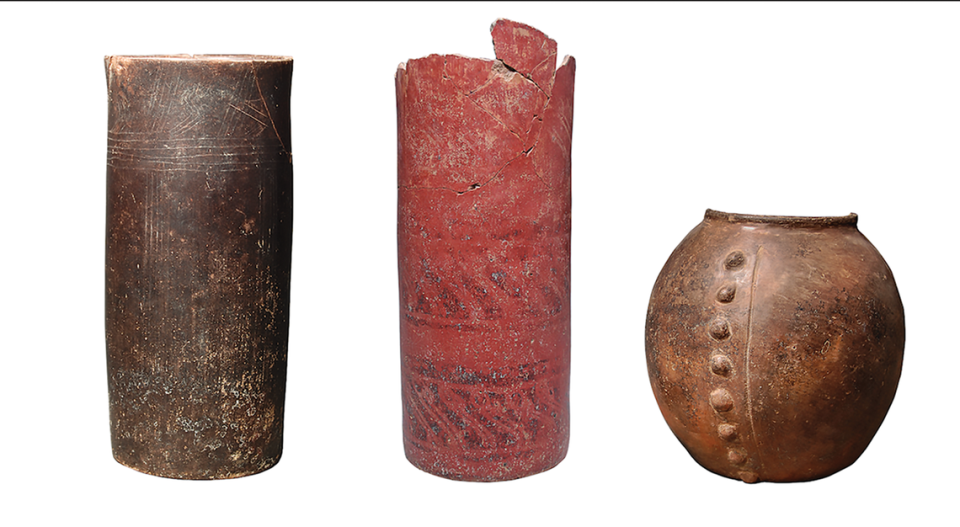Trove of 1,000-year-old vases held ‘unexpected’ and ‘elusive’ surprise. What was it?
In the early 2000s, archaeologists began exploring the remains of an ancient city in what is now known as Guatemala.
Among their discoveries at the Cotzumalhuapa site were a trove of 21 deposits buried beneath the remains of ancient sweat baths — including three ceramic vases with “unexpected” contents.
Inside the ancient vases, researchers discovered the “rare” and “elusive” residue of tobacco, according to a study published March 4 in the journal Antiquity. The discovery provides the first physical evidence for “ancient ritual practice involving tobacco” from Mesoamerica.
“This study suggests that the people of Cotzumalhuapa employed tobacco for ritual and (therapeutic) purposes (both are closely linked) during the Late Classic period (AD 650-950),” Oswaldo Chinchilla Mazariegos, associate professor of anthropology at Yale University, told McClatchy News in a March 5 email.
Uncover more archaeological finds
What are we learning about the past? Here are three of our most eye-catching archaeology stories from the past week.
→ Emerald green artifact 'ignored' for 80 years was 'rare' 500-year-old find
→ 2,400-year-old underground discovery stumped experts for decades — until now
→ Stone sarcophagi went unopened for 600 years — until now. See what was found inside
“It was a surprise when three of the seven vessels that we tested yielded positive results for nicotine, indicative of tobacco,” Marziegos said. “This was unexpected because the shape of the vessels suggested that they were used to contain and consume liquids.”
Photos show the three vessels that held tobacco residue. Two of them had a cylindrical shape while the third was spherical.

One of the cylindrical vessels was found less than 5 feet from the spherical vessel in 2007, researchers said. The second cylindrical vessel was found near a different structure in 2006. All three of the ceramic containers held obsidian blades.
Tobacco in liquid form
The discovery of nicotine within the vases suggests “the use of tobacco in liquid form and within vessels larger than miniature flasks, or ‘tobacco houses,’ that are more usually associated with tobacco use,” according to the study.
“The results suggest that tobacco infusions were employed in ritual activities at Cotzumalhuapa,” Mazariegos said.
“We do not know whether they actually drank such infusions or how often. We do not claim that they had a habit of consuming tobacco in this form. In fact, ingesting tobacco infusions is highly toxic.”
Oral consumption of tobacco can be “potentially lethal.” Experts said it can have a narcotic-like effect, causing “deep sleep, visions and divinatory trances.”
Another theory is that the tobacco infusions were associated with ancient “curing and purification rituals” because the vases were found near the ruins of sweat baths.
Sweat baths are “especially important in therapeutic and ritual procedures related to childbirth,” according to researchers. Sometimes uncured tobacco powders were consumed during these procedures. Experts also suggested the obsidian blades found in the vessels could have been used for cutting umbilical cords.
Ancient uses for nicotine
The use of tobacco among ancient people is well-documented in historical records and art, but there is limited physical evidence because of the “poor preservation of organic material,” researchers said.
By the 16th century, tobacco had recreational, medicinal and religious uses in Mesoamerica, researchers said. It was used in social life, for digestive aid, as a protective talisman, to eliminate fatigue and more.
Tobacco was most often smoked, but there is documented preparation of tobacco as a liquid for medicinal purposes, according to experts.
“The widespread use of tobacco for ritual and therapeutic purposes is well documented in early colonial to modern times, but this is the first study that reveals such uses many centuries earlier ... using archaeological data,” Mazariegos said. “It suggests that ritual practices in the region included using tobacco in liquid form.”
Cotzumalhuapa is in southern Guatemala.
Museum collection photo leads to ‘remarkable’ discovery. ‘Thought it was an illusion’
Emerald green artifact was ‘ignored’ for 80 years. It was a ‘rare’ 500-year-old find
Ancient tin badge — depicting a dragon — found in Poland. It had a special purpose

